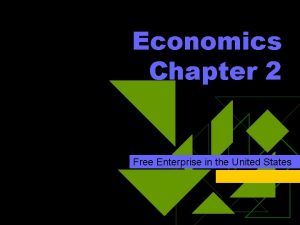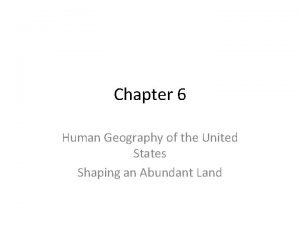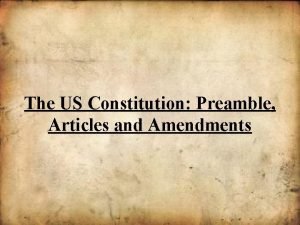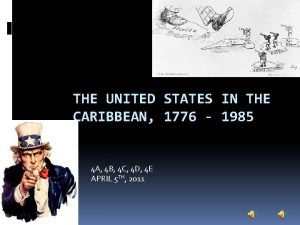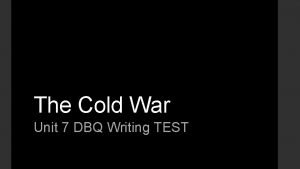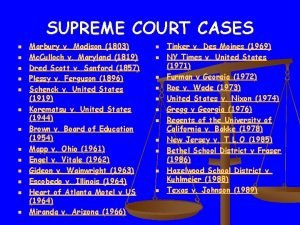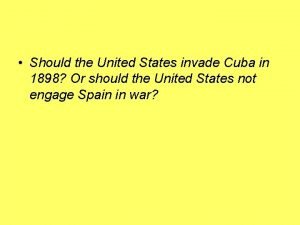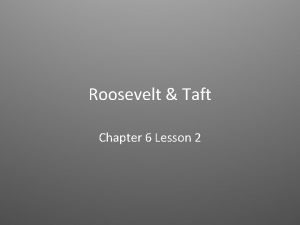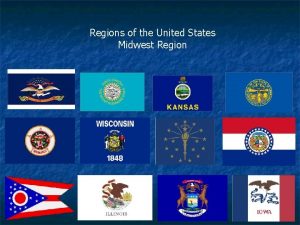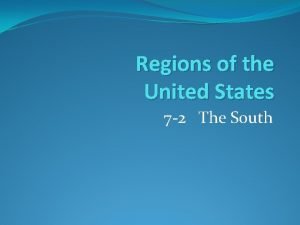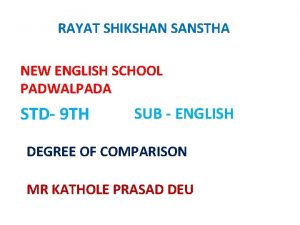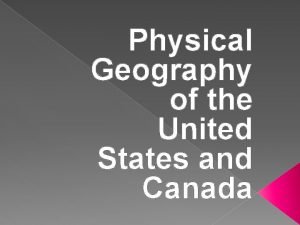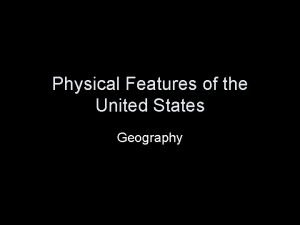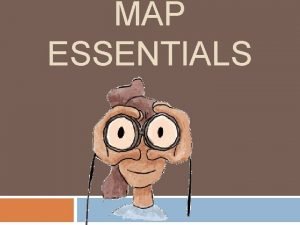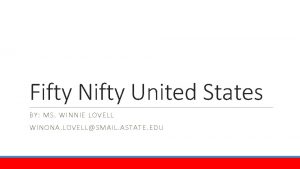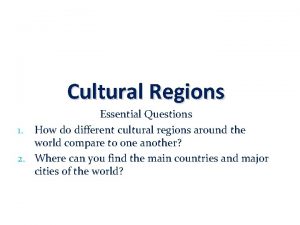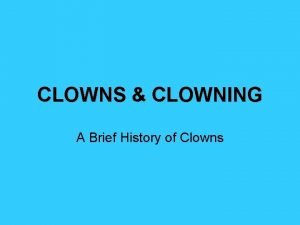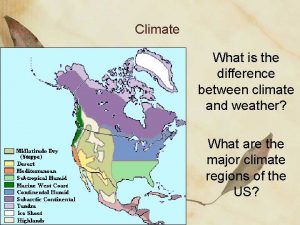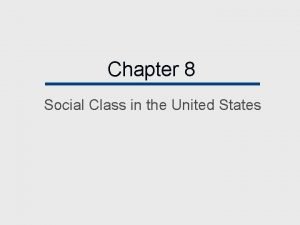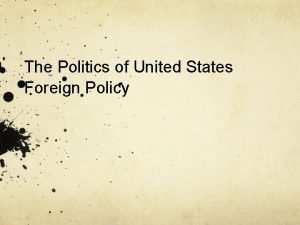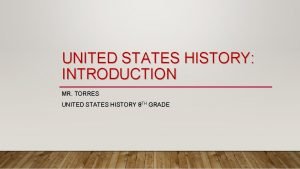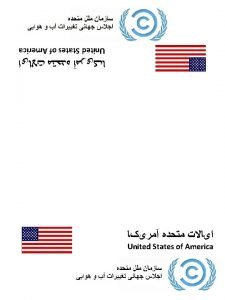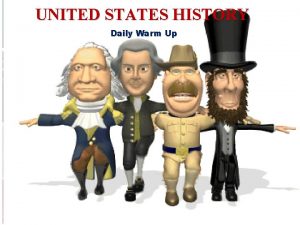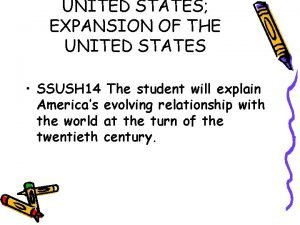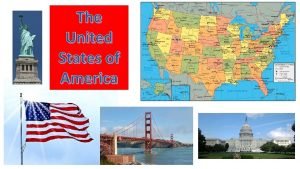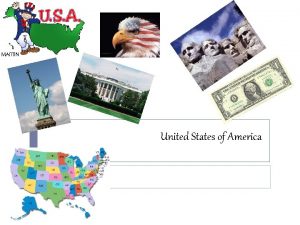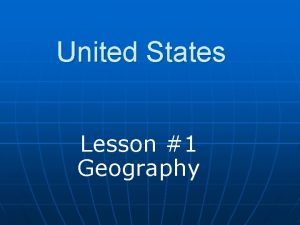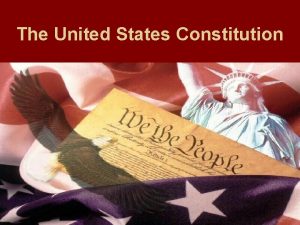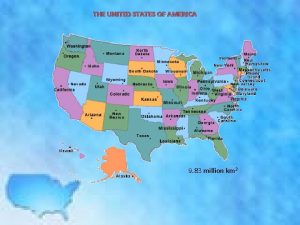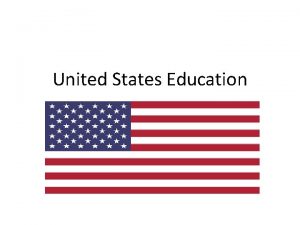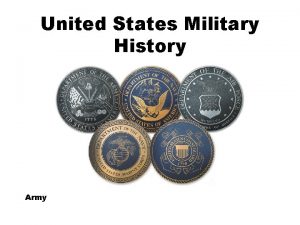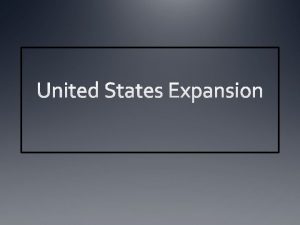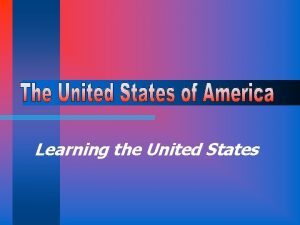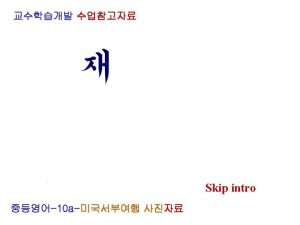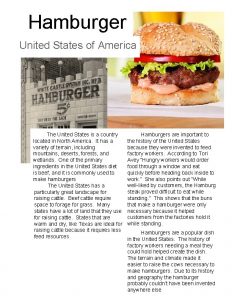Chapter 13 Politics in the United States Introduction






























- Slides: 30

Chapter 13 Politics in the United States

Introduction u Viewing American politics with a special focus on how it resembles and differs from politics in other nations will allow us to better understand the U. S. political system

Key Statistics Population: 300 million u Territory: 3, 475, 031 sq. miles u Independence: 1776; Constitution: 1789 u Head of State/Head of Government: President George W. Bush u Languages: English & Spanish u Religion: 56% Protestant, 28% Catholic, 2% Muslim, 2% Mormon, 2% Jewish, 10% None u

Current Policy Challenges u u u u u War on Terror – no clear cut enemy Economic Recession Socioeconomic Status/ Social Issues faced by African. Americans and Hispanic Americans “War on Drugs” Environmental Issues/ Global Warming Education – National Testing Immigration Foreign Policy – “Bush Doctrine” – preemptive strike in the wake of 9/11, in particular to thwart the possible use of WMD’s War in Iraq (Acting unilaterally, without UN support)

Bush Policy Patriot Act u “No Child Left Behind” NCLB u Running large deficits in the national budget u Right-wing Christian fundamentalist resurgence u Tax cut – in particular for the wealthy u Increased size of federal government more than any president in U. S. history u

U. S. History u Oldest standing constitution u Democratic Party is the oldest active political party in the world u Civil War was the watershed event in solidifying the U. S. political system (14 Amendment, citizens of U. S. first, then the states)

Geography u Bordered by Atlantic Ocean (East), Pacific Ocean (West), Canada (North), and Mexico (South) u This secluded geographic position led to the practice of isolationism in foreign policy through the 19 th century

Population u 300 million u 3 waves of immigration 1. 1840 -1860 (Western Europe/Scandinavia 2. 1870 -1920 (Asia/Eastern Europe) 3. 1945 -Present (Latin America/Asia)

Economy u u World’s largest economy, GNP of $9. 9 trillion in 2000 America has become largest debtor nation 1. Americans buy more foreign goods than foreigners by U. S. goods 2. Federal government operates enormous deficits in the federal budget. u u American government subsidizes many American businesses American government pays for research, design, production, and marketing in many areas and allows for access to this research for free Tariffs & Import Quotas Minimum Wage

Constitutional System u Bill of Rights – secures civil liberties, due process, and individual rights u Federalism – government powers divided among national, state, and local governments

Constitution continued u 1. 2. 3. 4. Powers Assigned to Federal Gov’t Declare War Make Treaties with Foreign Nations Coin Money Regulate Commerce between states

Constitution continued u 1. 2. 3. 4. 5. Powers Assigned to States by 10 th Amendment Education Marriage/Divorce Intrastate Commerce Regulation of Motor Vehicles Federal grant moneys limit states authority by determining how money is spent

Constitution continued u 1. 2. 3. Powers that can be exercised by both Federal & State Government Imposing Taxes Defining & Punishing Crimes Supreme Court decides which acts of the federal government & state governments are within their powers

Separation of Powers u “Presidential Democracy” u System of Checks & Balances u Legislative Power – Congress u Judicial Power – Federal Courts u Executive Power – Office of the President u See Figure 13. 2

Constitution continued u u u Article I, Section 6 – “No person can hold any office in the U. S. , while serving as a member of either House” (Separation of Powers as opposed to fusion-of-powers, Great Britain & Germany) Member of the House – two-year term(unlimited) Member of the Senate – six-year term (unlimited), 1/3 of the Senate up for election every two years) Electoral College – selects president Federal Judges appointed by President, approved by the Senate Judicial Review

Political Culture u Melting Pot vs. Patchwork Quilt u Trust in Government – Skeptical about politicians u Love for country (Patriotism); distrust of political office/officials u Politically efficacious u Litigiousness of Society

Political Socialization u Family u School u Mass media – “scarcity doctrine” – print media is not regulated, however, broadcast media is limited in nature therefore it is regulated and monitored with greater scrutiny u Social groups/relationships

Political Participation u Voter turnout – relatively poor in the U. S. compared to other advanced democracies u Voter registration u Campaign Activity u Communal Activity u Protest Activity u Table 13. 4, pg. 427

Recruitment of Leaders u Middle & Upper class of social ladder u Well educated u Look & Sound good on TV

Unique Direct Primary Candidate Selection – Who party members will campaign for and support u Nomination – Who party will officially nominate u Election – process of voters registering their choices among the nominees u Direct Primaries – candidates selected directly by voters in government elections u

Primaries Closed – only persons registered as members of a particular party can vote in a primary (25 states) u Crossover – voters do not have to choose a party to vote for until election day. (14 states) u Open – voter’s can vote in whichever party primary they choose without disclosing affiliation u Blanket – voters can switch back and forth between parties in voting without disclosing the switch u

Interest Articulation: PAC’s u They support or oppose candidates nominated by parties u Mainly interested in public policies elected officials draw up and pass u Greatest increase in PAC’s have come since 1974 u NRA largest campaign contributing PAC, more than $14 million u Over 4, 000 PAC’s in the U. S.

PAC’s 1. 2. 3. Narrow Material Interest PAC’s – back candidates that support legislation that favors a particular business or company (ie. Chrysler, GE, Texaco, Coca-Cola) Single, nonmaterial Interest PAC’s – support candidates who support their nonmaterial issues (ie. NRA, National Right to Life Committee, Abortion Rights Action League) Ideological PAC’s – support candidates committed to certain ideology. (ie. National Committee for Effective Congress (Liberal), National Conservative Political Action Committee (Conservative) )

Pressure Groups u Lobbyists u Litigation

Special Characteristics of American Political Parties u Two-Party System (Democrats vs. Republicans) u “Americanization” of Electioneering (TV debates & Advertisements, Canvassing voters, polling citizens) u Low Cohesion amongst party members u Weak Discipline – neither president nor party congressional leaders have any effective power over party members in Congress or at the state & local level to compel them to vote one way or another u Divided Party Control of Government (Ticket-Splitting) u Decentralized Organization – Stratarchies (National, State, Local)

National Level u Presidential Party u Congressional Party

State Level u Gubernatorial u Legislative Party

Local Level u Congressional District Committees u County Committees u City Committees u Wards/Precinct Committees

Policymaking in America Checks & Balances u Deadlocks u Coalition Building u “Government is a powerful and dangerous institution created by fallible human beings. Its primary objective – its only legitimate reason for existing and being obeyed – is to secure every person’s Godgiven right to life, liberty, and property. ” u

Policy Performance u Tax Policies – Federal government collects 62% of all taxes and 57% of revenues from all sources. -Progressive tax system that places heaviest burden on those who can pay u Distributive Performance – Federal government spends 56% of budget on social welfare functions, 19% on defense, 13% on national debt interest. (Education, 0. 7%) 1. Regulatory Performance 1. Social Insurance 2. Education 3. Environmental Protection 1. 2. TABLE 13. 8, pg. 448 HOW THE U. S. COMPARES TO OTHER NATIONS
 Chapter 2 free enterprise in the united states
Chapter 2 free enterprise in the united states Chapter 6 human geography of the united states
Chapter 6 human geography of the united states Chapter 5 lesson 1 physical geography of the united states
Chapter 5 lesson 1 physical geography of the united states Was the united states on the axis powers or allied powers?
Was the united states on the axis powers or allied powers? Unit 2 the united states and canada
Unit 2 the united states and canada Slave state
Slave state National premier soccer league
National premier soccer league Marshall case
Marshall case United states student association
United states student association The united states ought to provide a universal basic income
The united states ought to provide a universal basic income The preamble of the constitution
The preamble of the constitution The united states in the caribbean 1776 to 1985
The united states in the caribbean 1776 to 1985 Products of the southeast
Products of the southeast Expansion of the united states of america 1607 to 1853 map
Expansion of the united states of america 1607 to 1853 map Why did truman believe greece needed aid
Why did truman believe greece needed aid Previous owner of mexican cession
Previous owner of mexican cession Author of awake united states
Author of awake united states Mapp v. ohio
Mapp v. ohio Why did the united states invade cuba in 1898?
Why did the united states invade cuba in 1898? Lesson 2 roosevelt and taft
Lesson 2 roosevelt and taft Midwest region of the united states
Midwest region of the united states 7 regions of the united states
7 regions of the united states The united states is the greatest buyer positive degree
The united states is the greatest buyer positive degree United states and canada physical map
United states and canada physical map World geography
World geography World map with latitude lines
World map with latitude lines 50 nifty united states
50 nifty united states North central america
North central america Grotesque whiteface
Grotesque whiteface Subtropical united states
Subtropical united states Consequences of social class
Consequences of social class
